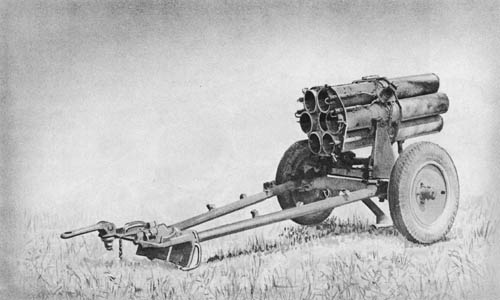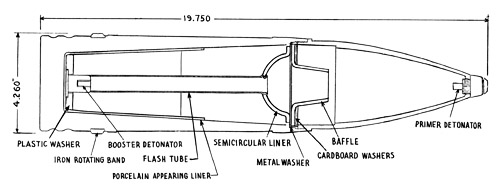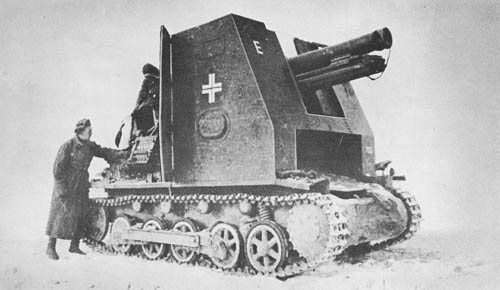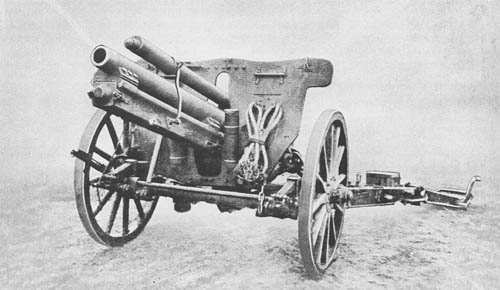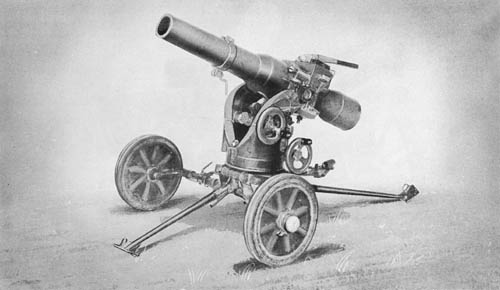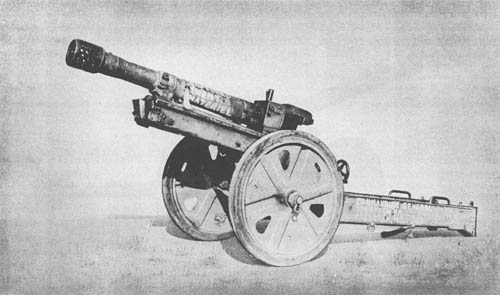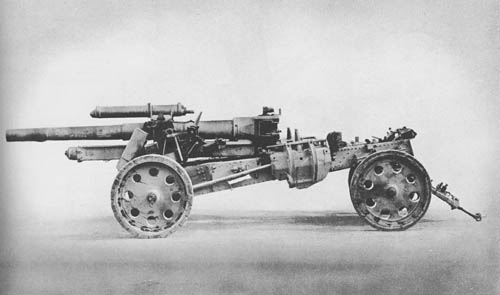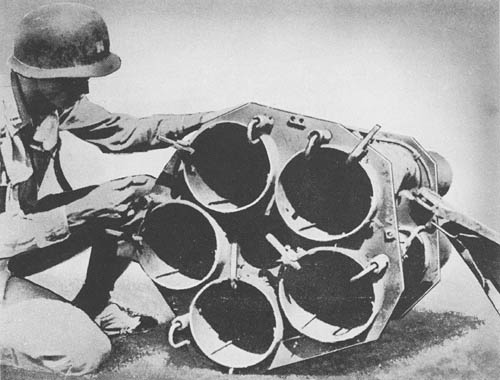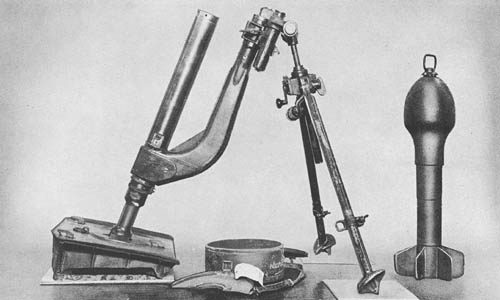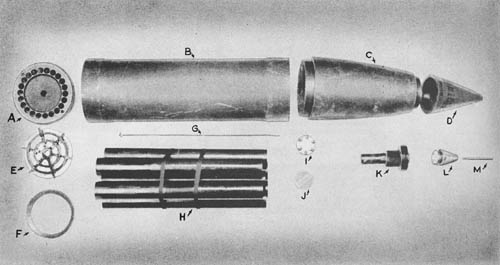
This rocket is very streamlined and in outward appearance resembles an artillery projectile. All metal components of the body are machined inside and out and appear to be of mild steel.
A complete round of this ammunition is made up of the following components (see photograph above):
(a) Nozzle assembly containing 22 orifices evenly spaced around the rim of the nozzle. These orifices are set an an angle of 16° from the axis of the rocket. This angle gives the rocket clockwise rotation in flight besides providing forward thrust. In the center of the nozzle there is an ignition hole which receives the electric squib.
(b) Motor body having two bourrelet surfaces.
(c) High-explosive body containing 22.4 pounds of TNT. It is made of mild steel with fairly thick walls and is threaded on its base and screwed into the motor body.
(d) False ogive, which completes the streamlined contour of the rocket.
(e) Trap, a casting painted rust red. Between the trap and the nozzle there is a tinfoil disk which is used as a moisture and dirt seal.
(f) Black powder base igniter.
(g) Igniter wick, a celluloid tube containing a charge of quickmatch.
(h) Propellant charge consisting of seven sticks 21.67 inches long and 2.46 inches in external diameter.
(i) Spacer to hold the head igniter in place and allow for the proper ignition of the entire propellant.
(j) Igniter.
(k) Booster cup.
(l) Point-detonating fuze.
(m) Wooden actuating rod.
SPECIFICATIONS
| Weight of projectile as fired | 241.30 lb. | |
| Weight of TNT bursting charge | 22.40 lb. | |
| Weight of propellant powder | 39.50 lb. | |
| Weight of high-explosive body | 65.25 lb. | |
| Weight of propellant body | 87.75 lb. | |
| Weight of nozzle assembly | 5.12 lb. | |
| Length | 49.21 ins. | |
| Diameter | 8.27 ins. |
German: p. 355
